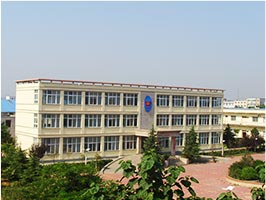JC/T 808-2013 硅铝质耐火浇注料耐碱性试验方法/Test method for alkali-resistance of silica-alumina refractory castable
硅铝质耐火浇注料耐碱性试验方法
1范围
本标准规定了硅铝质耐火浇注料耐碱性试验方法的原理、仪器设备、试体制备、试验步骤、结果评定和试验报告等。
本标准适用于硅铝质耐火浇注料的耐碱侵蚀试验。其他材质的耐火材料耐碱性试验也可参照执行。
2规范性引用文件
下列文件对于本文件的应用是必不可少的。凡是注日期的引用文件,仅注日期的版本适用于本文件。
凡是不注日期的引用文件,其最新版本(包括所有的修改单)适用于本文件。
GB/T 17617 耐火原料和不定形耐火材料 取样
YB/T 5202.1 不定形耐火材料试样制备方法 第1部分:耐火浇注料
3原理
高温下,无水碳酸钾形成碱蒸气与硅铝质耐火材料试体发生反应,记录试体的变化情况。
4仪器设备
4.1试验炉
满足6.1~6.3要求的电炉或其他类型的炉子。
4.2热电偶
可测1100℃的热电偶高温计。
4.3电热干燥箱
温度控制能满足(110±5)℃。
4.4测盘工具
精度为0.1mm的游标卡尺或其他量具。
4.5天平
感量为0.1g.
5试体制备
5.1浇注料取样按GB/T 17617的规定执行。
5.2.3个试体为一组,试体为边长(70±0.5)mm的立方体。
5.3成型及养护按YB/T 5202.1的规定执行。
5.4试体在成型面的中央预留直径为25 mm、深35m圆柱孔,并应经过(110±5)℃保温8h以上的烘干处理。
5.5试体内外表面光滑平整。
5.6用氧化铬在试体的侧面写上编号,
6试验步骤
6.1装样
试体放入加热炉内,要求试体距发热体30m以上,放置炉膛的均温区内,其温差应不超过士10℃,试体间至少应保持10mm的距离。
称取工业级无水碳酸钾14g,放入试体的圆柱孔内,用尺寸不小于70mmx70mmx5mm的与试体同样材质的材料或三氧化二铝小于30%的低铝质陶瓷面砖制成的试体孔盖严密盖好。
加热炉的测温部位应选择能代表试体所处部位的平均温度处。
6.2加热
以4℃/min~6℃/min的速度升温至1100℃。
6.3保温
在1100℃保温5h,保温期间温差应不超过±10℃。
6.4冷却
保温结束后,试体随炉自然冷却至150℃以下方可出炉。
7结果评定
用游标卡尺或其他量具测量试体表面裂纹宽度(以裂纹的最宽处为准),以3块试体中等级相同的2块为准,如出现3块试体判属等级均不一致,须重新取样检验。评定标准如下:
a)一级:试体无可见裂纹;
b)二级:裂纹宽度不大于 1.0mm;
c)三级:裂纹宽度1.1mm~2.0mm;
d)四级:裂纹宽度大于2.0mm。
8试验报告
试验报告应包括:
a)委托单位:
b)试样名称、编号;
c)试验条件;
d)试验结果;
e)试验单位、操作人员和日期。
Test method for alkali-resistance of silica-alumina refractory castable
1 Range
This standard specifies the principle, equipment, test system preparation, test procedure, result evaluation and test report of the alkaline resistance test method of silica-alumina refractory castable.
This standard is applicable to alkali attack resistance test of silica-alumina refractory castables. The alkaline resistance test of other materials can also be carried out with reference.
2 Normative reference documents
The following documents are essential for the application of this document. For dated references, the date-only version applies to this document.
For undated references, the latest version (including all amendment orders) applies to this document.
GB/T 17617 Sampling of refractory raw materials and amorphous refractories
YB/T 5202.1 Methods for preparing samples of amorphous refractories – Part 1: Refractory castables
3 Principle
At high temperature, alkali vapor formed by anhydrous potassium carbonate reacts with silica-alumina refractory material, and the change of the specimen is recorded.
4 Instruments and Equipment
4.1 Test furnace
Electric furnaces or other types of furnaces that meet requirements 6.1 to 6.3.
4.2 Thermocouple
Thermocouple pyrometer measuring 1100℃.
4.3 Electric drying oven
Temperature control can meet (110±5)℃.
4.4 Measuring Disk Tools
Vernier calipers or other measuring tools with an accuracy of 0.1mm.
4.5 Balance
The sensitivity was 0.1g.
5 Test system preparation
5.1 Sampling of castables shall be carried out according to GB/T 17617.
5.2.3 Each test body shall be a group, and the test body shall be a cube with a side length of (70±0.5)mm.
5.3 Molding and maintenance shall be carried out according to YB/T 5202.1.
5.4 The test body shall reserve a cylindrical hole with a diameter of 25 mm and a depth of 35m in the center of the forming surface, and shall be dried at (110±5)℃ for more than 8h.
5.5 Smooth and smooth surface inside and outside the test.
5.6 Write a number on the side of the test with chromium oxide.
6 Test Procedure
6.1 Loading Sample
When the test body is put into the heating furnace, it is required that the test body is more than 30m away from the heating body, and the temperature difference should not exceed 10℃ in the average temperature zone of the furnace, and the distance between the test bodies should be maintained at least 10mm.
Weigh the industrial grade anhydrous potassium carbonate 14g, put it into the cylindrical hole of the test body, and tightly cover the test body hole with a material of the same material as the test body with a size of not less than 70mmx70mmx5mm or a low aluminum ceramic tile made of aluminum oxide less than 30%.
The temperature measuring part of the heating furnace should be selected to represent the average temperature of the part where the test is located.
6.2 Heating
The temperature is raised to 1100℃ at a speed of 4℃/min~6℃/min.
6.3 Thermal Insulation
At 1100℃ for 5h, the temperature difference during insulation should not exceed ±10℃.
6.4 Cooling
After the heat preservation is finished, the test body can be cooled to below 150℃ naturally with the furnace.
7 Result Evaluation
Use vernier calipers or other measuring tools to measure the crack width on the surface of the test body (at the widest point of the crack), and take the 2 pieces of the same grade among the 3 pieces of the test body as the standard. If the 3 pieces of the test body are found to be inconsistent with the grade, it is necessary to resampling for inspection. The evaluation criteria are as follows:
a) Level 1: No visible cracks in the test body;
b) Secondary: crack width is not more than 1.0mm;
c) Level 3: crack width 1.1mm~2.0mm;
d) Level 4: Crack width greater than 2.0mm.
8 Test report
The test report shall include:
a) Entrusted unit:
b) Sample name and number;
c) Test conditions;
d) Test results;
e) Test unit, operator and date.



